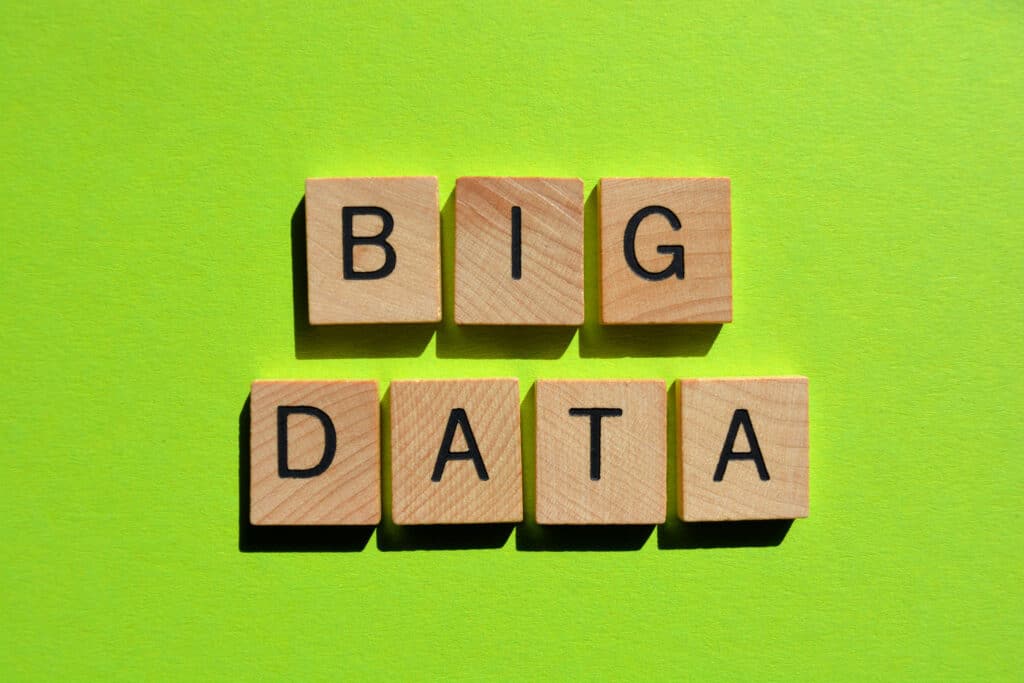
Data-driven marketing is a new trend in marketing that focuses on using data to make marketing decisions. Data-driven marketing is the process of analysing data, usually from social media or other sources, to find out what customers are looking for and how they want it delivered
Data-Driven Marketing is a marketing strategy that utilises data and analytics to drive decisions about marketing activities. Marketing has evolved over the years, and we are now in an era where businesses can collect more data than ever before. This new “Big Data” available for marketing purposes is transforming the way marketers make deci sions. This article will discuss what Data-Driven Marketing is (7 Key Strategies and Benefits), how it compares to traditional marketing strategies, the benefits of using big data in marketing, common challenges in Data-driven marketing, and if marketing is science or not?
Jump Ahead To :
What Is Data-Driven Marketing?

Data-driven marketing is an approach that looks to the data surrounding your business, product or service. The goal of data-driven marketing is to identify new opportunities for growth and revenue by carrying out market research with the help of big data analytics tools. Data-driven marketing involves using metrics such as sales figures, customer feedback, and web traffic patterns etc., which are then analysed through complex statistical techniques like predictive modelling to gain insights into consumer behaviour. This enables businesses/marketers to make informed decisions about strategies within their business model that will lead them towards long term success while ensuring a positive ROI on investment made into these activities.
Still rolling!!!
Marketers use the data collected to create marketing campaigns that will increase customer loyalty, drive up product sales and improve their brand’s image. Customers are more likely to be engaged when they receive targeted content based on their interests or demographic profile. This type of engagement is also known as ‘authentic marketing’ because it makes customers feel like marketers understand them better than traditional one-size-fits-all marketing strategies, which were primarily created in a pre-digital world where big data analysis wasn’t available to use for generating insights about consumers behaviour.
The authenticity factor builds trust within an organisation/brand, leading to increased revenue streams down the road. As businesses grow at lightning speeds due to digital transformation, data-driven marketing will become increasingly important.
When done correctly, data-driven marketing can provide extremely valuable insight into the behaviour of consumers that is otherwise not available to companies that don’t have access to big data tools and analytics capabilities.
Data-driven marketers look at their metrics through an entire customer life cycle which enables them to track how customers interact with different touchpoints throughout the path towards purchase-including where they first heard about an organisation/brand or what types of activities trigger a particular response from users etc. This allows businesses/marketers to act quickly on feedback without wasting time testing ideas ‘in vain’. For example, receive negative reviews about your brand on social media platforms like Facebook or Twitter. You can use the data you have collected from sources like Google Analytics or other marketing tools to analyse web traffic.
With a greater emphasis on digital marketing as organisations compete for customers online due to increased brand visibility and competitive pricing strategies available through eCommerce platforms, marketers will continue to rely more heavily on big data analytics tools to make informed decisions about key areas within their business model. This includes customer acquisition/engagement/loyalty etc.
Businesses that do not implement a proper strategy around using these insights risk falling behind competitors over time, leading to revenue loss down the road. Data-driven marketing can also help businesses better understand where they need improvement based on consumer feedback so that changes can be made to business processes quickly.
6 Beneficial Data-Driven Marketing Strategies

Data-driven marketing is fast becoming a necessary part of any successful business strategy. With the explosion in digital tools and channels, data has become increasingly available to marketers who can take advantage of increased customer activity insight. The challenge lies in collecting this information and then working out how best to put it into action within your marketing campaigns. Here are six helpful strategies that can be applied across all digital platforms: –
- The more you know about your customers’ online habits, the better chance you have of creating a campaign they’ll want to engage with.- It’s important for brands to understand where their consumers spend time online so companies can position themselves accordingly.- By knowing what users are doing on your site, you can engage them with more relevant campaigns that are likely to get shared.
- Whether through email marketing or social media, the goal is still simple: make sure users know they’re being heard. When one of your customers takes time out of their day to leave a comment about how much they love or hate something related to your brand, show some appreciation by letting them know someone read what they had to say.- By using data from sources like Google Analytics and Facebook Insights, marketers can measure the impact of different types of content posted on behalf of brands for future strategies around publishing timing and topics.- You don’t have all the answers yourself, so why not tap into the expertise of others? Social listening tools can help marketers discover what their audience is talking about in a more general sense.
- It’s one thing to monitor conversations around your brand, but it takes another level of sophistication to know how these users are feeling.- Using an effective social media monitoring tool, brands can shift through all that data and get insights on sentiment such as positive or negative mentions, so they understand where best to focus efforts.- Knowing which platforms work for you makes future campaigns far more efficient.- Take Facebook, for example: while there may be declining organic reach, dedicated fans want updates relevant specifically to them rather than content published by everyone who has liked the page.
- By segmenting audiences according to data, marketers can put together each group’s most effective communication strategy.
- When it comes time to publish content and campaigns targeted at specific groups of customers, you want those efforts to be as relevant as possible by only sharing information that’s useful specifically for them.- This will help ensure all your marketing activity is indeed having a positive impact on their experience with your brand. – One of the goals of social media is to drive awareness about brands or products. Still, organic reach has been decreasing over time, making it difficult for things like hashtags and Facebook posts alone. So how do we get past this? Some platforms such as LinkedIn and Twitter Instagram have their own paid ad options so brands can reach a wider audience.
- If you want to get the most out of your data, use it across all relevant platforms, so you have an accurate picture of what’s going on. For example, marketers need to know why if potential customers are engaging with content in one place (i.e., Twitter) but not another (like Facebook).- Understanding where users spend time online means making better decisions about which social media platform is best for sharing certain types of information, allowing them to make their overall marketing more efficient and effective .- By leveraging customer insight gathered from different sources, companies can create campaigns that will drive increased revenue growth while also creating positive experiences for their audience
The Benefits Of Using Big Data In Marketing

The biggest benefit that companies get from big data-based marketing campaigns is the ability to understand their customers. It enables marketers to predict what they like, how much they are willing to pay for things if they want certain products or services etc.
Big Data helps business owners increase sales by giving them insight into buyer behaviour, which allows them to cater better to consumers’ needs. You can also improve new product development with real-time feedback, so there’s no guesswork involved when creating something new. The results would directly reflect on whether people enjoy or hate the product.
Big data also helps marketers to create more relevant messages. It is not just about targeting certain demographics. Still, it’s increasingly becoming important for brands to engage with their consumers personally so they can build strong relationships and keep them interested in what they have to say.
Big Data allows companies to track everything that people do online, which means every click, like, share etc. So this information could be used by businesses who want to display targeted ads according to each person’s interest. Marketers can now target audiences based on how likely customers would be willing to pay for products rather than basing their advertisements around broad assumptions of specific groups because big data has changed the way marketing works forever.
Common Challenges In Data-driven Marketing
Finding and hiring a great Data Science and analytics team
This is probably the most important challenge as you need people with strong analytical skills who can think outside of the box. Due to the nature of the job and the needed skills, it might get challenging to attract the right person for the job.
You should probably look for someone who has expertise in a certain field and good communication skills to explain their findings properly to stakeholders. Additionally, they should be aware that this role requires them to work closely with the business side to understand better what those numbers mean from different perspectives.
Departmental Silos
Departmental silos is a common challenge in data-driven marketing because the other big common challenge is failing to remember the human side, which can be linked to technology and how it works, but also emotional intelligence.
There’s always room for improvement! Data-driven marketing or service should not just focus on numbers and those little stars you see next to your reviews because they’re there. Instead, this kind of marketing strategy should include changes in behaviour that come from real people who would like these services even more than before if their feedback was taken into account by companies striving for success online – including local businesses – instead of focusing only on KPIs (key performance indicators) such as number of likes, number of shares, etc.
Dedication
It looks somehow foolish, creating a data-driven marketing strategy when you’re not committed to it. Most companies have constantly made this mistake in the long run. Though they might come up with a great strategy, it will still amount to nothing if they acclimate the needed tools for success.
Is Marketing a Science?
Yes, marketing is a science. It deals with data-driven marketing decisions, subject to the same scientific methods as any other decision-making process.
The first step in marketing research is data collection and analysis using descriptive, predictive or prescriptive statistics. This can be done through surveys, focus groups, usability tests, etc. There are also software tools that help marketers analyse their existing marketing databases to find trends and patterns not otherwise visible because of large amounts of data (Big Data).
The next step includes applying statistical models to determine cause/effect relationships between marketing variables. For example, brand awareness vs ad spend across different media channels over time, so you could see if spending more on TV ads increases your brand awareness compared to radio campaigns.
Marketing is not just about marketing activities. The marketing mix, the core of marketing management or strategy, includes product development and positioning, pricing, distribution channels (place) and promotion. However, it also requires understanding consumer behaviour to understand why consumers buy your products in certain quantities at specific prices while they are willing to pay more for others. And this step can be made through data analysis as well.
A great example is how Amazon uses Big Data & Machine Learning algorithms to predict what books you might like based on other items you purchased before so that publishers could better target their promotions specifically towards readers who would most likely be interested in a new book from them – thus increasing sales without having to increase ad spend on Amazon’s platform.
Wrap Up
Data-driven marketing is not just for big businesses anymore. Smaller brands can start using this technique to identify new opportunities and grow their business, too. If you’re looking for a reliable partner who will help you get started with data-driven marketing or take your strategy to the next level, contact our team of experts today!






